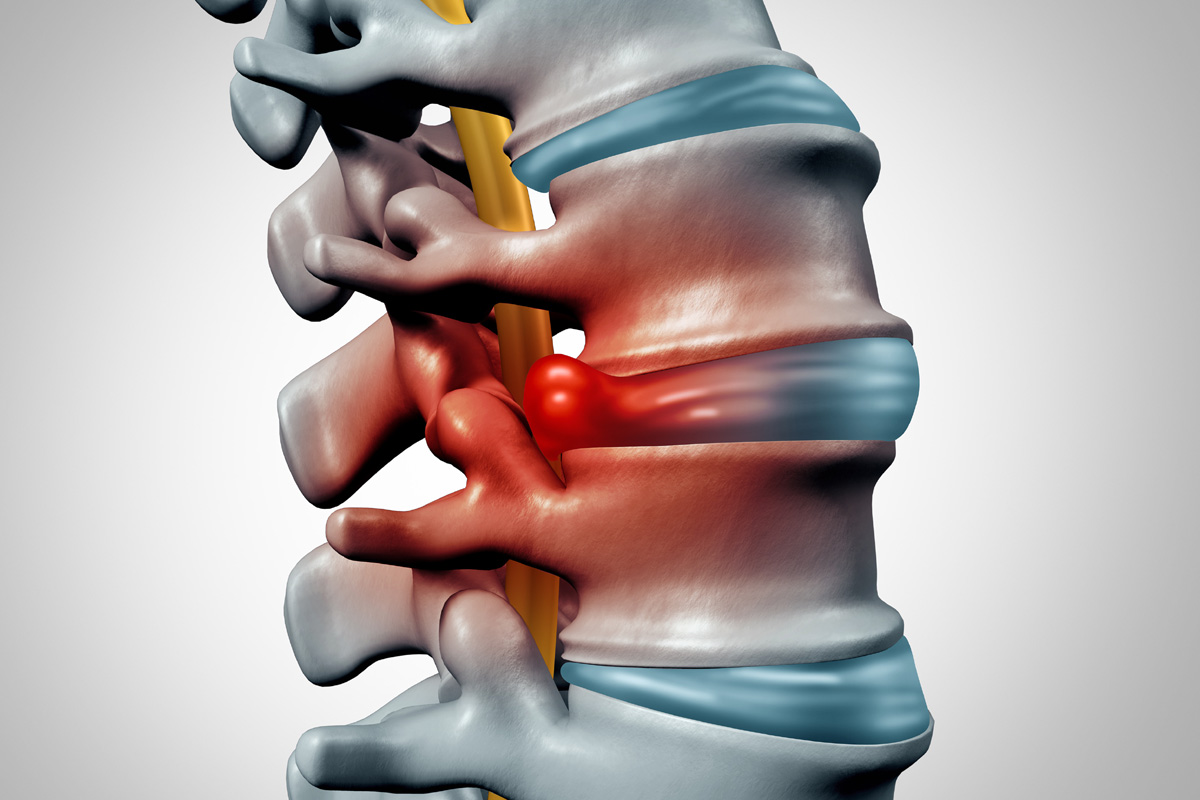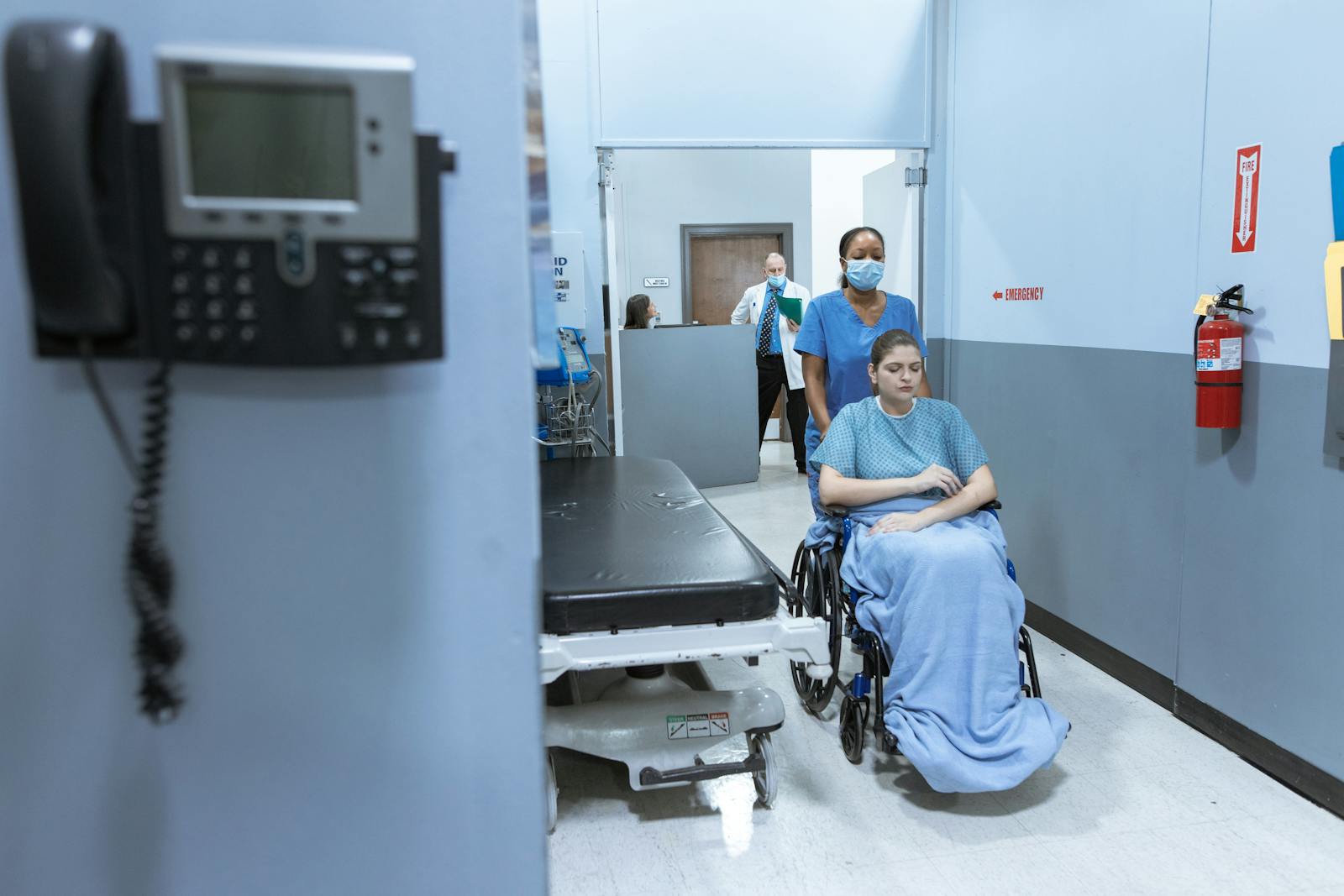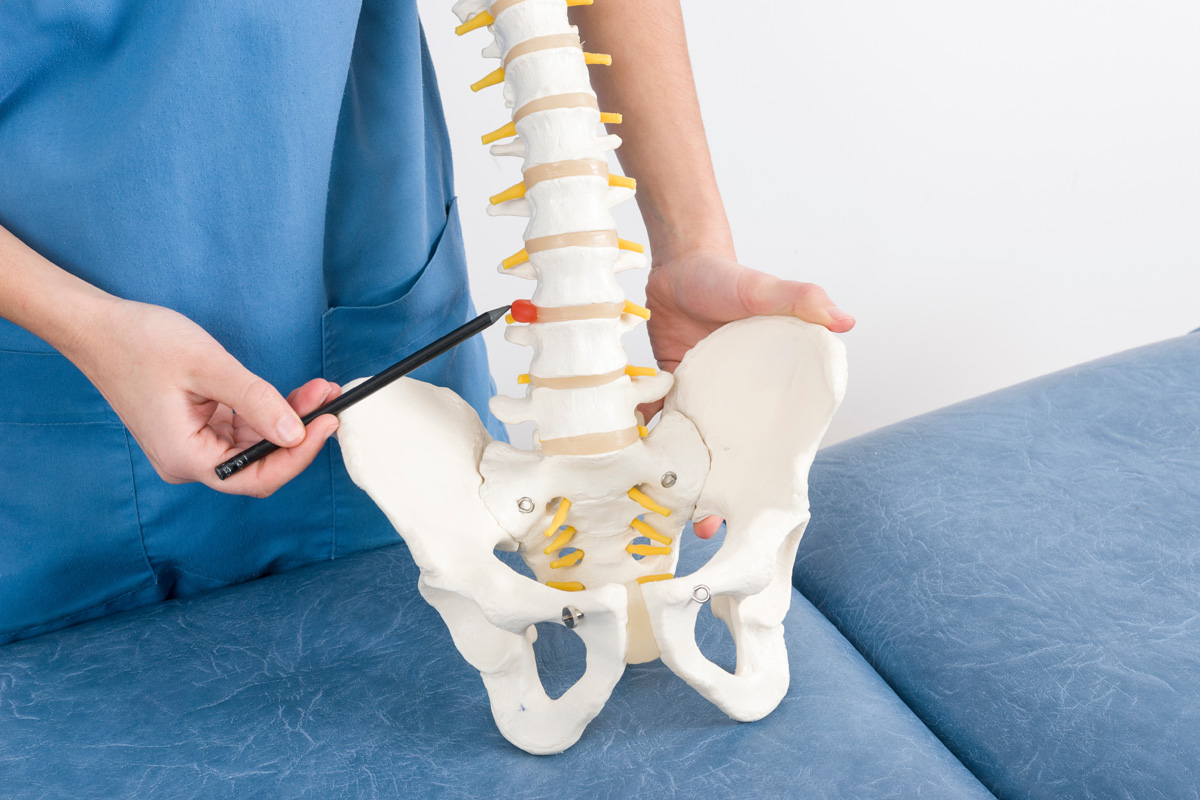The intricate subject of cervical hernia, a prevalent condition characterized by the protrusion of intervertebral discs in the neck, necessitates a thorough exploration. With this condition’s potential to impact anyone, regardless of age or lifestyle, understanding its causes, symptoms, and potential treatment options becomes essential. A detailed analysis of this topic could certainly provide important knowledge and insights to medical practitioners, patients, and individuals at risk. Therefore, the ensuing discourse is designed to enlighten us further on this multifaceted medical condition.
Understanding Cervical Hernia
To fully grasp a cervical hernia, it is important to explore its intricacies, focusing on its causes, symptoms, and the primary changes it induces in the cervical region of the spine. The origins of hernia mainly lie in the weakening of the intervertebral discs, which serve as cushions between the cervical vertebrae. The degenerative process, triggered by factors such as aging, trauma or lifting heavy objects, can lead to rupture of these discs, subsequently causing a cervical hernia.
Contrary to common hernia myths, it is not a condition that only affects the elderly or those involved in strenuous physical activities. It can also occur due to genetic predisposition, obesity, or repetitive strain injuries. Symptoms often include neck pain, numbness, weakness, or even paralysis in severe cases.
The physiological changes brought about by a cervical hernia involve displacement of the nucleus pulposus, the soft, gel-like center of the intervertebral disc, into the spinal canal. This displacement exerts pressure on the spinal nerves, leading to pain and other neurological symptoms. Therefore, a thorough understanding of cervical hernia necessitates a detailed examination of its origins, the myths surrounding it, and the primary alterations it provokes.
Anatomy of the Neck
Understanding the anatomy of the neck is pivotal in better comprehending the impact of a cervical hernia, as it provides valuable insights into the intricate structures that can be affected by this condition. A fundamental part of the neck’s anatomy is the neck musculature, containing groups of muscles that facilitate movements, support the head, and serve essential functions in swallowing and speech.
The neck musculature is a complex network of overlapping muscles. It includes superficial muscles, such as the sternocleidomastoid and trapezius, responsible for gross motor movements. Deeper within, the intricate arrangement of the infrahyoid and suprahyoid muscles play a critical role in swallowing and speech.
Equally important is the understanding of the spinal cord structure, housed within the cervical vertebrae. It’s a delicate bundle of nerve fibers, extending from the brain, through the neck, and down the spine. This structure carries signals between the brain and the rest of the body. The seven cervical vertebrae, C1 through C7, protect the spinal cord while allowing considerable neck movement.
In essence, a thorough grasp of the neck anatomy, particularly the neck musculature and spinal cord structure, contributes significantly to the understanding of potential complications arising from a cervical hernia.
Causes Behind Cervical Hernia
Exploring the reasons behind cervical hernia, it becomes clear that they mainly arise from the degenerative changes that occur in the cervical spine as part of the aging process. As the intervertebral discs lose their flexibility, elasticity, and shock-absorbing characteristics, the risk of a hernia markedly increases.
Certain genetic predispositions can also contribute to the onset of cervical hernia. Individuals with a family history of spinal disorders are at an increased risk, underscoring the role of heredity in the development of this condition. The genetic makeup may influence the rate of disc degeneration and the strength of the annulus – the outer layer of the intervertebral disc, thereby predisposing certain individuals to cervical hernia.
Lastly, occupational hazards, specifically those involving repetitive neck motions, heavy lifting, or maintaining a neck-forward posture, can exert excessive strain on the cervical spine. Over time, this can lead to disc wear and tear, eventually resulting in a hernia. Overall, understanding these causative factors is integral in formulating effective prevention strategies and treatment modalities for cervical hernia.
Identifying the Symptoms
Recognizing the symptoms of a cervical hernia is vital for timely diagnosis and treatment, with common signs encompassing neck pain, stiffness, arm numbness, and difficulty in coordinating fine motor skills. These symptoms are often exacerbated by physical activities and can result in diminished quality of life if not adequately managed.
Pain management is pivotal in handling this condition. Neck pain can range from mild discomfort to severe and debilitating. This pain often radiates down to the shoulders or arms, and may be accompanied by tingling or numbness. Patients may experience difficulty in executing fine motor skills, such as buttoning a shirt or using a keyboard, which can have a significant impact on everyday life.
The emotional impact of a cervical hernia should not be underestimated. Chronic pain and physical limitations can lead to anxiety, depression, and affect interpersonal relationships. It is essential to take into account this emotional aspect when evaluating the overall impact of a cervical hernia on a patient’s life.
These symptoms, while not exhaustive, are indicative of a possible cervical hernia. It’s crucial to seek professional medical advice upon experiencing these symptoms for appropriate diagnosis and treatment.

Cervical Hernia Diagnosis
To begin with, the clinician will assess the patient’s symptoms and medical history. They will inquire about the location and nature of the pain, any potential injury that may have caused it, and any associated symptoms such as weakness, numbness, or tingling in the arms or hands.
Physical examination usually involves checking for areas of tenderness, range of motion, muscle strength, and nerve function. The patient may be asked to perform certain movements or positions to see if they exacerbate or relieve the symptoms, thereby offering clues as to the location and severity of the hernia.
Further diagnosis is then achieved using radiographic evaluation. This may involve magnetic resonance imaging (MRI), computed tomography (CT) scans, or X-rays. The choice of imaging technique depends on the patient’s specific symptoms and the clinician’s suspicion of the hernia’s exact nature. These imaging modalities can reveal the hernia’s size, position, and the degree of spinal cord or nerve root compression. Such detailed visualization aids in formulating an accurate diagnosis and subsequent treatment plan.
Conservative Treatment Options
In the management of cervical hernia, conservative treatment options play an integral role. These methods, primarily non-surgical and physical therapy approaches, aim to alleviate symptoms and improve quality of life. A detailed examination of these treatment modalities will provide insight into their effectiveness and applicability.
Non-Surgical Treatment Methods
For patients diagnosed with a cervical hernia, a variety of non-surgical treatment methods, also known as conservative treatment options, are often utilized to alleviate pain and improve functionality. One such method is acupuncture, a traditional Chinese treatment that can provide substantial benefits. Primarily, acupuncture stimulates the body’s natural healing processes, reduces inflammation, and relieves pain by releasing endorphins. Another non-surgical treatment for cervical hernia is chiropractic care. This involves spinal adjustments to correct alignment issues and restore the spine’s natural curvature, which can alleviate pressure on the herniated disc. Chiropractic care can also improve nerve functionality, reduce muscle spasms and inflammation, and increase range of motion. Both treatments are effective in managing symptoms and improving quality of life.
Physical Therapy Approaches
Moving beyond acupuncture and chiropractic care, physical therapy represents another conservative treatment strategy designed to manage the symptoms of a cervical hernia effectively. Therapies like manual mobilization and therapeutic ultrasound are cornerstones of this approach. In manual mobilization, a skilled physiotherapist applies precise, oscillatory pressure on the cervical joints to reduce pain and improve mobility. This technique is particularly helpful in alleviating nerve root compression, a common consequence of herniated cervical discs. Therapeutic ultrasound, on the other hand, uses high-frequency sound waves to generate deep heat within tissues. This process can promote healing by increasing blood flow and reducing muscle spasms and stiffness. These physical therapy techniques, when used synergistically, can notably enhance the quality of life for patients with cervical hernia.
Surgical Interventions
In the context of cervical hernia management, surgical interventions comprise a critical component of the treatment strategy. We will begin by examining the various hernia repair procedures, discussing their indications, technicalities, and potential complications. Following this, we will provide insights into recovery following surgery, offering practical advice to optimize the healing process and prevent recurrence.
Hernia Repair Procedures
What are the viable surgical interventions for the repair of a cervical hernia? The most common procedures involve the use of a synthetic mesh to support the weakened area, hence reducing hernia recurrence risks. Open hernia repair and laparoscopic hernia repair are the two primary surgical approaches, each with unique benefits and considerations. The choice of procedure often depends on the patient’s specific condition and genetic predisposition, highlighting the role of genetics in hernia development and recurrence. It is important to note that while these procedures are generally effective, they may not entirely eliminate the risk of hernia recurrence, especially in cases with strong genetic factors or lifestyle practices that exacerbate the condition. Therefore, follow-up care and monitoring are essential in minimizing recurrence.
Post-Surgery Recovery Tips
After undergoing surgical interventions for cervical hernia, patients enter a critical phase of recovery where certain strategies and guidelines can greatly influence the healing process and success of the surgery. Pain management is paramount during this period. Appropriate use of analgesics, alongside non-pharmacological techniques such as deep breathing exercises and progressive muscle relaxation, can effectively reduce discomfort. Concurrently, protecting the emotional wellbeing of patients is vital. Providing psychological support, facilitating open communication about fears and concerns, and encouraging a positive mindset can markedly enhance the recovery experience. Adhering to prescribed physical activity restrictions, maintaining a nutritious diet, and keeping follow-up appointments are also essential components of a successful postoperative recovery.
Physical Therapy for Recovery
A significant portion of recovering from a cervical hernia involves the strategic application of physical therapy techniques. These techniques encompass pain management strategies and rehabilitation exercises that are designed to restore functionality, enhance mobility, and limit future injury.
Pain management strategies form a critical part of the physical therapy process. This typically involves the use of non-pharmacological interventions such as transcutaneous electrical nerve stimulation (TENS), heat and cold therapy, and manual therapy like massage. These strategies aim to reduce discomfort and inflammation, promote healing, and increase circulation to the affected area.
Rehabilitation exercises are equally crucial. These exercises are custom-designed for each patient, taking into account the severity of the hernia, the patient’s overall health, and their recovery goals. An effective exercise program may include range-of-motion exercises, strengthening exercises, and activities to improve posture and flexibility.
The successful implementation of these therapies requires a multidisciplinary approach. A team of physical therapists, physicians, and sometimes psychologists work together to manage pain, improve function, and help patients regain control over their lives. This holistic approach ensures a well-rounded recovery, setting the foundation for a healthier and more active lifestyle post-recovery.

Dealing With Post-Surgery Complications
Occasionally, despite the meticulous execution of the surgical procedure and subsequent physical therapy, patients may encounter post-surgery complications such as infection, nerve damage, or recurrence of the hernia. These complications can be challenging to navigate, requiring a complex blend of medical interventions and emotional coping strategies.
Infections can be managed effectively with antibiotics, however, if the infection is severe, further surgical intervention might be necessary. Nerve damage can result in chronic pain, numbness, or loss of function. Pain management techniques, including pharmacological interventions, nerve blocks, and physical therapy, can help mitigate these symptoms. In some cases, additional surgical procedures may be necessary to repair the damage.
Hernia recurrence, although less common with modern surgical techniques, still poses a significant concern. It necessitates a repeat surgery and an extended recovery period. Emotional coping strategies, such as cognitive-behavioral therapy and mindfulness techniques, can be beneficial during this time.
Moreover, patients should maintain open and regular communication with their healthcare providers. This allows for prompt identification and management of any complications, leading to improved outcomes and quality of life post-surgery.
Lifestyle Changes for Prevention
The prevention of cervical hernia is greatly influenced by certain lifestyle adjustments: dietary modifications, physical exercise, and posture. Maintaining a nutritious diet, engaging in regular, targeted exercise, and observing correct posture can dramatically reduce the risk of developing a cervical hernia. The following analysis will elucidate the importance of these three factors and provide concrete strategies for implementation.
Dietary Modifications
Implementing strategic dietary modifications can greatly contribute to the prevention of cervical hernia, by maintaining ideal weight and reducing strain on the neck muscles and spine. Ensuring essential nutrient absorption is important; a balanced diet rich in fiber, proteins, and essential vitamins aids in the body’s maintenance and repair process. Intake of anti-inflammatory foods, such as green leafy vegetables, fatty fish, and berries, can help reduce inflammation and pressure on the cervical spine. Avoiding processed foods, high-sugar diets, and excessive alcohol consumption can also lower the risk of weight gain, which puts extra strain on the neck muscles. In sum, a well-regulated diet enhances overall body health, which is crucial in preventing cervical hernia.
Exercise and Posture
Adopting a regimen of targeted exercises and maintaining proper posture can serve as a powerful protective shield against the development of cervical hernia. The Pilates benefits, for instance, are multifold. This exercise form strengthens core muscles, enhances flexibility, and improves overall body alignment, all of which can alleviate undue pressure on the cervical spine. Similarly, the impact of Yoga is profound. It not only aids in maintaining a healthy weight but also promotes spinal health through various asanas that induce spinal flexibility and strength. Postural correction, an integral part of both Pilates and Yoga, is also crucial. Proper posture reduces strain on the cervical region, thereby mitigating the risk of herniation. Hence, a disciplined exercise regime coupled with postural mindfulness can effectively guard against cervical hernia.
Personal Experiences and Case Studies
Delving into the domain of personal experiences and case studies, we find a rich tapestry of narratives that offer profound insights into the lived experiences of individuals grappling with cervical hernia. One salient theme that emerges from these narratives is the emotional impact of the condition. Patients often report feelings of anxiety, depression, and fear, particularly in the face of surgical interventions and the potential for chronic pain. The psychological toll can be significant, contributing to a deteriorating quality of life and negatively affecting recovery outcomes.
Simultaneously, the role of family support emerges as pivotal in these narratives. Family members often serve as primary caregivers, offering not just physical assistance but also emotional solace. The presence of a robust support system can mitigate the emotional impact, fostering resilience and promoting a more positive prognosis.
Frequently Asked Questions
What Is the Typical Recovery Time for Cervical Hernia Surgery?
The typical recovery period post-surgery varies, depending on factors such as surgery complications and the level of post-operative care. Generally, it ranges from a few weeks to several months, allowing for complete healing and rehabilitation.
Can a Cervical Hernia Reoccur After Successful Treatment?
Yes, a cervical hernia can reoccur after successful treatment. It’s essential to follow hernia prevention strategies and be aware of potential post-surgery complications to minimize the risk of recurrence.
Are Cervical Hernias More Common in Certain Age Groups or Genders?
Cervical hernias display a higher incidence in older age groups, particularly over 50 years, due to degenerative changes. Men tend to have a slightly greater risk, which may be influenced by physical exertion and genetic predisposition.
How Does Cervical Hernia Affect Daily Activities and Work Productivity?
Daily activities and work productivity can be greatly impacted due to pain and discomfort caused by this condition. Pain management and physical therapy are often necessary to alleviate symptoms and maintain quality of life.
Can Certain Dietary Changes Reduce the Risk of Cervical Hernia?
Certain dietary changes, such as maintaining a healthy weight and avoiding constipation through high-fiber foods, can potentially reduce the risk of hernia symptoms and contribute to overall hernia prevention. However, further medical advice is recommended.

